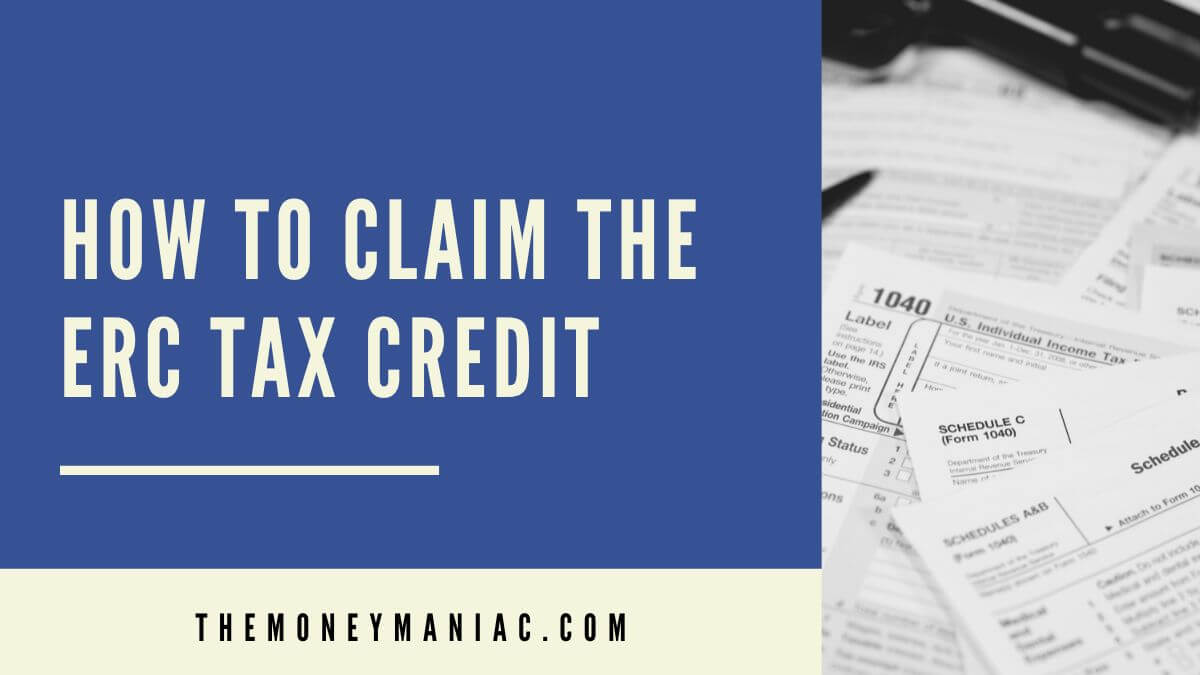Did your business suffer during the Covid-19 pandemic? Never fear. The government’s got your back!
You see, if you had people on your payroll during 2020 and 2021, you might just be in for a windfall. Welcome to the world of the ERC tax credit — a tax credit that can pump some serious dollars back into your business coffers.
Here’s the kicker. Depending on how big your company is, this could translate into hundreds of thousands or even millions of dollars.
But surprisingly, most small business owners are in the dark about this golden ticket. According to a recent NFIB survey, only 8% of businesses claimed the credit in 2020 (and only 10% in 2021).
The good news is… you still have time to get a refund. But you need to act quickly because the ERC tax credit deadline is fast approaching.
This article will give you all the essential details of the ERC program. Most importantly, we will walk you through the step-by-step process to claim your ERC tax credit before this opportunity is gone for good.
What Is The ERC Tax Credit?
The government established the Employee Retention Credit (ERC) program in March 2020 as part of the CARES Act (Coronavirus Aid, Relief, and Economic Security).
The ERC is a refundable tax credit, which means that it can be claimed even if the employer does not owe any taxes. The credit is claimed on Form 941-X, an amended payroll tax return. And if the amount of the ERC exceeds the employer’s payroll tax liability, the excess amount is refunded to the employer.
Initially, businesses affected by the pandemic could claim a tax credit of up to $5,000 per employee in 2020. Then the following year, the Consolidated Appropriations Act improved the ERC refund opportunities for eligible businesses. These updates enabled qualifying employers to claim up to $7,000 per employee per quarter for the first three quarters of 2021.
Finally, the American Rescue Plan Act of 2021 provided even more opportunities for businesses to benefit from this credit by expanding the ERC program to include recovery start-up businesses.
The IRS defines a recovery start-up business as a business that:
- Began operations on or after February 15, 2020
- Reported $1 million or less in gross annual receipts in 2020 and 2021
- Had at least one W-2 employee, excluding family members, on the payroll.
Rather than just three quarters, recovery businesses can claim the ERC refund for all four quarters of 2021, up to $28,000 per employee. However, the IRS imposes a quarterly cap of $50,000, meaning the maximum ERC credit available for a recovery business is $200,000 in 2021.
Related reading: QBI Tax Deduction: The 7-Step Guide for Small Business Owners
3 Easy Steps To Claim Your ERC Tax Credit
“Easy” and “IRS” aren’t two words that usually go together. But fortunately, in the case of ERC, you don’t have to worry about complicated paperwork. Here’s how to claim your ERC tax credit in three simple steps:
Step 1: Check Your ERC Tax Credit Eligibility
Your ERC eligibility is based on two conditions:
- The number of full-time employees you employed during 2019
- If your business was financially impacted by the pandemic or government mandates
Note: If your business qualifies as a recovery start-up business, you can skip this step and go directly to ‘Step 2: Calculate Your ERC Tax Credit’.
Calculate your 2019 FTE (full-time employees):
The IRS defines full-time as any employee who worked an average of 30 hours per week in any calendar month or 130 or more hours during any one month of 2019.
Now, take the sum of all your full-time employees for each month in 2019 and divide by 12. This number represents your full-time employees in 2019 for the purposes of determining your ERC tax credit eligibility.
Businesses with 100 or fewer full-time employees in 2019 can receive a refund equal to 50% of the wages paid in 2020, up to $5,000 per employee. For example, if you had fifteen employees, your refund could be worth up to $75,000.
For 2021, the IRS expanded the guidelines to include all businesses with 500 or fewer full-time employees in 2019. These businesses can receive an ERC tax credit equal to 70% of the wages paid per employee per quarter, up to $7,000 per employee per quarter for the first three quarters of 2021.
It’s worth noting that if your business employed more full-time workers than allowed above, you can still receive a credit for any wages you paid an employee who was unable to work due to suspended operations caused by government mandates or lack of revenue.
Related reading: Tax Gain Harvesting: Your Step-By-Step Guide To Tax Savings
Calculate the pandemic’s impact on your business:
The IRS uses two criteria to determine whether your business was financially impacted during the pandemic:
- You suffered a full or partial shutdown due to government mandates
- A decline in gross receipts
Some common examples of a full or partial shutdown are:
- A restaurant that had to limit seating due to sanitary distancing protocols
- Office or showroom closures
- Travel restrictions that affected business operations
- Supply chain disruptions caused by port closings or reduced factory production due to government-imposed safe-distancing requirements for factory workers
Even if your business didn’t suffer a full or partial shutdown, you can still qualify if you had a decline in gross receipts in 2020 or 2021.
To be eligible for the 2020 ERC tax credit, gross receipts in any 2020 quarter must be 50% less than the same period in 2019.
Under the expanded guidelines for 2021, your business would be eligible for the ERC refund for any quarter that gross receipts were 20% less for the same quarter in 2019 or the immediately preceding quarter.
For example, let’s say that for Q2 2021, your gross receipts were the same as in Q2 2019 but 20% less than in Q1 2021. You could claim a refund for the second quarter because gross receipts were 20% less than the immediately preceding quarter.
And remember, you can only claim the ERC credit for the first three quarters of 2021 unless you operated a recovery start-up business.
Step 2: Calculate Your ERC Tax Credit
Now for the fun part, calculating your ERC tax credit.
For 2020, you can claim 50% of the wages paid to each employee, up to $5,000 per employee for the year.
For example, let’s say you had two employees. The first, you paid $7,500, and the second earned $40,000.
To calculate your credit for the first, take $7,500 and multiply by 50%, which equals $3,750. For the second, since 50% of $40,000 is greater than $5,000, your refund would be capped at $5,000. Together, your total ERC tax credit would equal $8,750.
For 2021 the refund is limited to the first three quarters (unless a recovery start-up business). You can take a credit for 70% of the wages paid per employee per quarter for any eligible quarter, up to $7,000 per employee.
For example, let’s say you had twenty-five employees earning $10,000 per quarter, and you are eligible for a tax credit in Q1 and Q3 2021. Taking 70% of $10,000, you get $7,000. Next, multiply this amount by the 25 employees and then the two quarters ($7,000 x 25 x 2), and you get a refund of $350,000.
As you can see, the ERC tax credit can be worth a significant amount, even for relatively small businesses. Plus, the IRS doesn’t impose any restrictions on how you use this refund. So you can use it as you see fit!
Step 3: Apply Before The Deadline
The 2020 ERC tax credit deadline is April 15, 2024. And the 2021 ERC tax credit deadline is April 15, 2025.
If you already filed your 2020 and/or 2021 tax returns without the ERC tax credit, you can always apply for your ERC refund retroactively by filing Form 941-X.
Unfortunately, you can’t claim the ERC tax credit and deduct the refunded wages on your tax returns. So you may also need to file an amended tax return reducing wages by the amount of your ERC tax credit.
If you need assistance in this process, be sure to consult with an accountant or tax advisor.
Related reading: S Corp vs C Corp: How To Structure Your Business
Beware Of ERC Scams
Business owners unfamiliar with the ERC program can become the targets of aggressive marketers promising quick and effortless money. So stay vigilant and watch for the following warning signs to protect yourself and your business from ERC scams.
- Unsolicited calls from unknown companies or agencies
- Statements that they can determine your eligibility within minutes
- Charging hefty upfront fees
- Fees are based on a percentage of your refund
- Stating that you qualify without reviewing your tax situation
- Statements that you should claim as there is nothing to lose. (Anyone who improperly claims the credit will have to pay it back, plus substantial penalties and interest.)
In addition, many ERC scams use the program as an excuse to get access to confidential taxpayer information. And they may even attempt to take a cut of your refund.
For these reasons, we highly recommend that you first consult with your trusted tax advisor before enlisting the services of a third-party ERC service provider.
Related reading: Simple IRA vs 401k: Choose The Right Plan For Your Business
Final Thoughts
The ERC tax credit is a real opportunity to boost your business’s financial health if you employed people during 2020 and 2021. But you need to act fast because the deadlines are coming up quickly.
Your first step should be to consult with your accountant or tax advisor. They can help you figure out if you’re eligible and guide you through the process. This is not an opportunity you want to miss, and in this case, having a professional’s advice is well worth a small investment.
If it turns out you’re eligible, get to work on filing Form 941-X as soon as possible. This is the form you’ll need to begin the process of claiming your ERC tax credit.
Remember, it’s not often the government offers to put a significant sum back into your business. So make the most of this chance to get the financial relief you need. Good luck!
Frequently Asked Questions
Yes, you can receive an ERC tax credit for wages paid to part-time employees. However, you must meet the eligibility criteria and other requirements outlined by the IRS.
The IRS doesn’t provide any specific timeframes for when you will receive the credit. But most companies report that it can take up to six to ten months. So file soon to ensure that you can get the credit as soon as possible.
Yes, you can receive an ERC tax credit even if you were granted forgiveness of a PPP loan.
In fact, under the safe harbor provisions provided by the IRS, you can exclude the following when calculating your gross receipts to determine ERC eligibility:
– Forgiveness of a PPP loan
– Amount of Shuttered Venue Operators Grant
– Amount of Restaurant Revitalization Fund Grant
Yes, you may still be eligible for the Employee Retention Credit (ERC) if you use a Professional Employer Organization (PEO). However, since the PEO is hired by the client to report, deposit, and/or pay employment taxes under its own EIN, the PEO is considered the taxpayer by the IRS. Therefore, the PEO is responsible to ensure that you receive any credits or overpayments (including the ERC tax credit) that you may be owed. This would include filing for the ERC Tax Credit on your behalf.
No, you do not have to pay back the ERC tax credit. However, if you receive an erroneous refund due to a false or fraudulent claim, you will need to repay the credit amount plus interest and penalty. That’s why it is important to make sure that your documents are accurate and your claim is valid before submitting it. Also, remember to keep all relevant evidence of your eligibility for the ERC in case of an audit.



